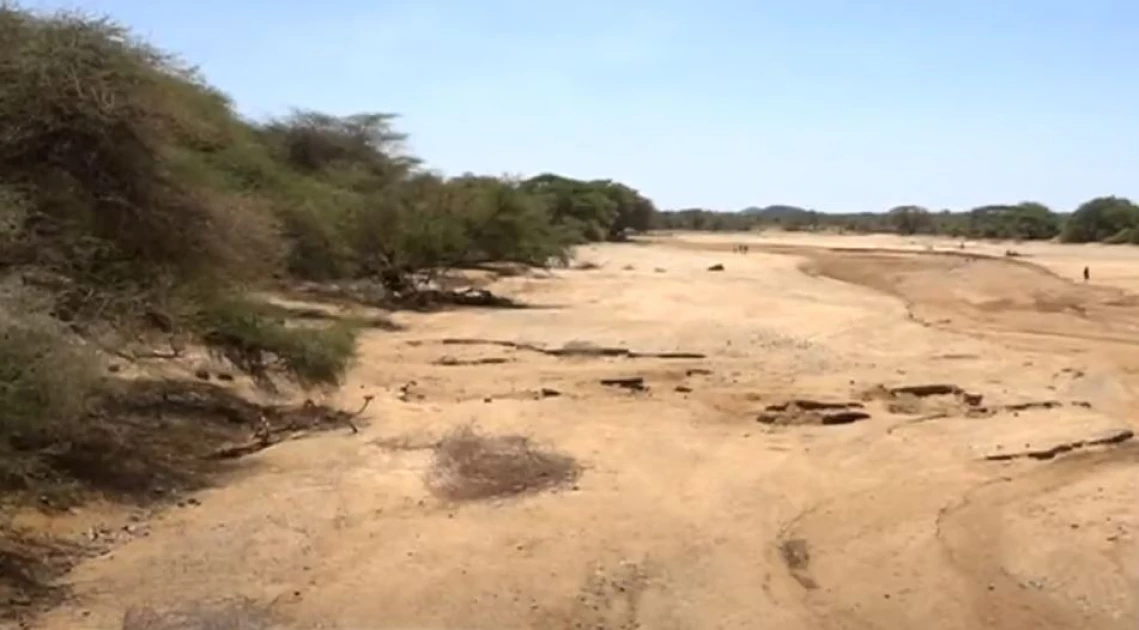Voices from drought: Inside the harsh reality of northern Kenya


Audio By Vocalize
Life is harsh in the northern part of Kenya.
Nature here is unapologetically cruel. The punishing heat from the scorching
sun, now well into its third year.
It has been 5 seasons without a drop of rain
here. Pastoralists here live under these extreme conditions. We encountered
communities fighting to survive one day at a time.
Counties that lie under this belt of severe
climate include Isiolo, Samburu, Marsabit and Garissa.
Our first stop is Gambela, a few kilometres
from Isiolo town. Here we were greeted by carcases of livestock scattered
across this plain, bare land. Thousands of livestock died here due to the
severe drought. There hasn’t been any rainfall in this area for two years.
As we head back to Isiolo, we find groups of
herders moving with their animals. Most of them are goats and sheep. The
animals are weak having been walking for several days now all the way from
Marsabit in search of pasture.
“I moved from Moyale hoping to save all my animals, but they all died. I had
300 cows and now I have 50. The cows died one after the other,” Galicho, a
resident, tells Citizen TV.
The few animals he has grazed on dry
vegetation. Even then, he had to lease this one-acre piece of land.
“I have had to lease this piece for 70,000 shillings and it is not even
adequate or helping me. I don’t have hope that it will ever rain,” he adds.
Inside a makeshift holding area, some animals
are too weak to stand up, the cows are suffering a lot, the grass is so dry and
it has no nutrients. We have to borrow water from neighbours.
Galicho’s makeshift home is his neighbour who is also struggling to keep his
animals alive. This cow was unable to get up on its own and has not been fed
the entire day.
In Lalpanya area along the Isiolo - Moyale
road, we meet more herders moving with their animals.
We travelled to Korr village which is
approximately 73 kilometres from Laisamis town in the county of Marsabit. For
the villagers, life has become unbearable for them and their animals. Water
points are scarce and far in between. The Korr livestock market too is
collapsing.
James Galgesa says life has become so difficult
here.
“We are so hungry and have lost everything. I
have lost almost 300 animals, now I have only nine goats The animals are not
attractive because they have lost weight and will only fetch between 1,500 to
2,000 shillings,” he says.
Transporters with big trucks used to buy
animals here and take them to the big cities but that business is no longer
viable. This ramp has not been used to load animals onto trucks for several
years. It is only a matter of time before the market shuts down.
Merille river at the border of Isiolo and
Marsabit is completely dry. It has been for almost 3 complete years. Herders
have been forced to dig UP the river bed to get some water to give their
camels.
The government, the private sector and non-governmental
organizations have teamed up to try and MITIGATE the effects of drought by introducing
initiatives such as the concept of insurance for livestock keepers.
Musa Kalkina is an insurance agent on a
mission, to register many villagers who are livestock keepers to take up an insurance
policy for their livestock known as Index Based Livestock Insurance.
Ndarakan Iswuramat is renewing her membership
in order to take up the policy. The policy requires one to register a certain
number of animals for as little as 300 hundred shillings.
But unlike other insurance policies, the
underwriter agrees to pay the livestock owner a certain amount of money which
will help the pastoralists to buy food for his family, fodder for the animals
and other essentials at a time when their animals are less productive.
The payouts are made when the drought is
severe.
In this village, only 9 people have taken up
the policy but little uptake is a result of the diminishing number of animals.
The insurance payout of cash amounts is made
through a rigorous process that involves another institution, the International
Livestock Research Institute which ascertains the severity of the drought
On the ground, scientists like Dr Kevin Shikuku
inspect the grass and fodder situation.
“We use ground surveillance to check the
condition of fodder. Sometimes we advise herders that a certain area is likely
to cause devastation to animals because there is no grass,” Dr Shikuku says.
In Mureti, Samburu County, we are greeted by the
song and dance of Rendile women. All their male spouses have left the manyatta
in search of pasture. They have not been away for several weeks.
The women are left to tend to the little
livestock left mostly sheep and goats. This is one of the areas where ILRI in
conjunction with student scientists from the University of Cornell in the USA
had called a trigger after observing drought and pasture conditions getting
severe.
“Our policy is index-based and we provide it
when herders cannot get cash so we pay them to buy alternative pasture,” Shikuku
says.
At the ILRI headquarters in the outskirts of Nairobi City, scientists are busy
revising, collecting and un-coding data from satellite imagery and other
apparatus.
The Index-Based Livestock Insurance project,
which is led by a team of researchers within the International Livestock
Research Institute ILRI has been working to improve the resilience of
pastoralists to drought-related losses.
Today, almost 45% of the pastoralists who have
taken up the Index Based Livestock Insurance are women, the reason?
“Women are the ones who are left behind when
the men go out in search of pasture. It is easy to access the women in the
village and they are more accountable especially because they have to raise
their children,” Shikuku says.
In Rapsu Village of Isiolo County, the vegetation
cover here is very different. Pastoralists here were encouraged by donors to
start planting grass and several acres of land that used to be bare and barren
now have plenty of grass and crops growing.
The blueprint given to them by experts was
simple, trap the water from the neighbouring Bisandi game reserve, and get a different
variety of seeds.
This venture was started two years ago, and
today the pastoralists have been able to feed the animals with green healthy
grass.
“Fodder production is the business that should
be done in the ASAL areas. This will stop a lot of animals from dying. It only
requires getting land and training the pastoralists and providing them with
seeds,” he adds.
Project coordinators include the county
government, local and foreign non-governmental organisations and a group of
pastoralists who were tired of losing animals.
Once the grass matures, it is cut and tied up into
bales. It is then transported to a warehouse where it is stored and only used
when the community needs it.
In Garissa, harsh weather conditions are also
being experienced. Most pastoralists hold on to their dying animals because
traditionally, keeping livestock is their livelihood.
“You’ll find like this place, people will come
with hundreds of livestock and graze at the same time. The competition between
the small animals and the big ones is stiff and herders have not been
enlightened about where to graze and where not too. With climate change, some
places might never have vegetation ever again.”
Hundreds of animals have been gathered here for watering. The owner of the
water trough charges the herders an amount of money depending on the animals.
He buys water which is delivered here at least twice a week.
At Lemiricho-Ore, a prominent manyatta in
Isiolo County, the locals do not subscribe to the Christian or Islamic faith.
Every year between the months of February and March, the elders conduct a
ceremony.
The locals here perform rituals that include
slaughtering a goat or a sheep, and reciting prayers before proceeding to
prepare a meal from the slaughtered animal.
It all starts with selecting an animal which is brought to the doorstep of the
manyatta. The selection of the animal is only a preserve of the firstborn child
of every home. An elderly man performs the ritual assisted by fellow elders and
morans. Even the young ones are not left behind.
They say even if the rains fail to come as they
have in the past, this sacrifice will continue even if it means killing all
their remaining animals.
In the desperate North, it is desperate
measures for a desperate situation. No effort is spared to fight the drought.


Leave a Comment